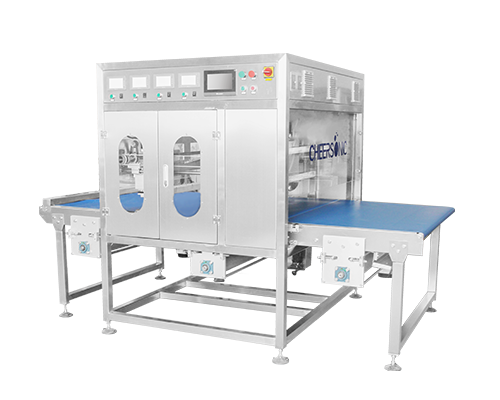How much do you know about baguettes
After eating baguette for so many years, do you really understand it?
The French use the term “long comme un jour sans pain” (long comme un jour sans pain) to describe the difficult time that seems to last forever.
For the French, bread is an indispensable staple food in daily life. Among them, baguette 🥖 is the best.
According to statistics, the French consume an average of 320 baguettes per second, and can eat more than 10 billion sticks a year, which can circle the earth… many times.
In recent years, more and more Chinese people have finally become in love with baguette, accepting its crispy outer skin and soft inner core. So, after eating baguette for so many years, do you really understand it?
History of Baguettes
There are so many versions and different opinions about the origin of the baguette, including the theory of the Napoleonic Wars, the theory of repairing the subway in Paris, the theory of labor rights, etc. It is not an exaggeration to say that it is the bread with the most stories.
The only thing that can be verified is that since the 18th century, French baguettes have replaced the original large round bread. In this way, not only the fermentation and baking time are shortened, but also it is easy to carry – clipped under the armpit That’s it.
It can even be said that the history of the evolution of the stick is the history of the development of French bread.
The Japanese bread god Ninbo Lifu said: “French bread, from a round loaf (Miche) to a slender bread like a baguette (Baguette), the history of French bread, if it is very general, is Let’s say something like this.”
The main raw material of baguette
As a staple bread, there are only four main raw materials for baguettes: flour, water, salt and yeast. Sometimes some bakers also like to add a certain proportion of malt extract.
French baguette fermentation method
In addition to the role of raw materials, there are different fermentation methods for making baguettes, which can be mainly divided into “direct method” and “fermented method”.
Regarding the “direct method”, it refers to the practice of mixing all bread ingredients into dough at one time, and then proofing, shaping and baking.
When it comes to the “fermented species method”, it is inevitable to mention these 4 commonly used fermented species:
Lupine species
Lubang species is a fermented species made from bacteria attached to flour and is the mainstream of French bread making.
The sour and fermented taste formed by it can be used in bread making to increase the depth of bread taste, highlight the flavor of the grain itself, and also well bring out the flavor formed by fermentation. At the same time, it can also make the bread skin slightly thicker and the color better, and increase the taste of the finished product with a springy, moist and non-sticky texture.
old french noodles
French old noodles refer to the dough made by mixing the four basic raw materials (flour, water, yeast, salt) for making French bread in a certain proportion, and then fermented at low temperature (2-6 degrees) for a long time (12-24 hours) made.
French aged bread has stable fermentability, fermented flavor, and certain gluten strength. It is suitable for making any type of bread. It can ferment a small amount of sour and sweet flavors, making bread soft and delicious.
fruit species
Fruit species isolate yeast from fruits and vegetables, cultivate it into yeast liquid, and then add the yeast liquid to flour to make the original yeast.
There are many types of fruit yeast, each with its own fragrance, aroma and fermentation power, which can enrich the deep taste of bread. Various strains are healthy, natural, and complete in nutrients.
Polish species
Polish species, also known as liquid species, originated in Poland before the 19th century. Poland has more water, which can increase the activity of yeast and shorten the fermentation time of the main dough. The finished bread has a fine texture and a strong wheat aroma. It is very suitable for hard, low-sugar and oil-based bread making.
For bread with a single and simple ingredient like baguette, Polish species can effectively delay the aging, enhance the taste and flavor, and fully awaken its wheat aroma. It is really a sharp weapon to conquer baguette!
About Cheersonic
Cheersonic manufactures automated portioning equipment for the food processing industry, helping bakers and food production facilities increase line speeds, decrease waste, eliminate inconsistent portions, and remove liability and human error.
Cheersonic offers ultrasonic cutting solutions that support start-up bakeries and high production commercial facilities alike. Small standalone machines can be used in manual baking facilities and large inline robotic solutions aid in high speed production.
UFM2300 Ultrasonic Cake Bars Cutting Machine, this is a custom machine designed for continuous supplied product to cut cake bars and loaf products into slices. The machine can be configured to cut from 1-10 loaves side by side automatically depending on width of product. The blade frame can be fitted with 4 ultrasonic blade system to cut fresh and sticky products. This machine has high cutting efficiency and can cut products up to 1 meter wide and can produce 1200 Loaves per hour.
- Average speed: about 600-1200 products per hour
- Friendly and easy operation
- Reliable and durable ultrasonic machine
- Increased quality and labor saving enhance capacity
- Improved portion quality and consistency
Chinese Website: Cheersonic Provides Professional Ultrasonic Cutting Solutions



